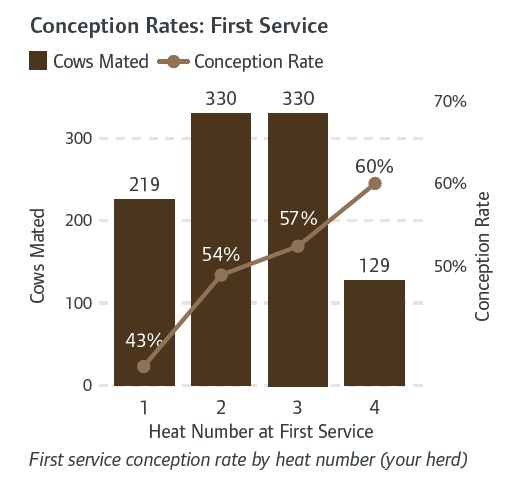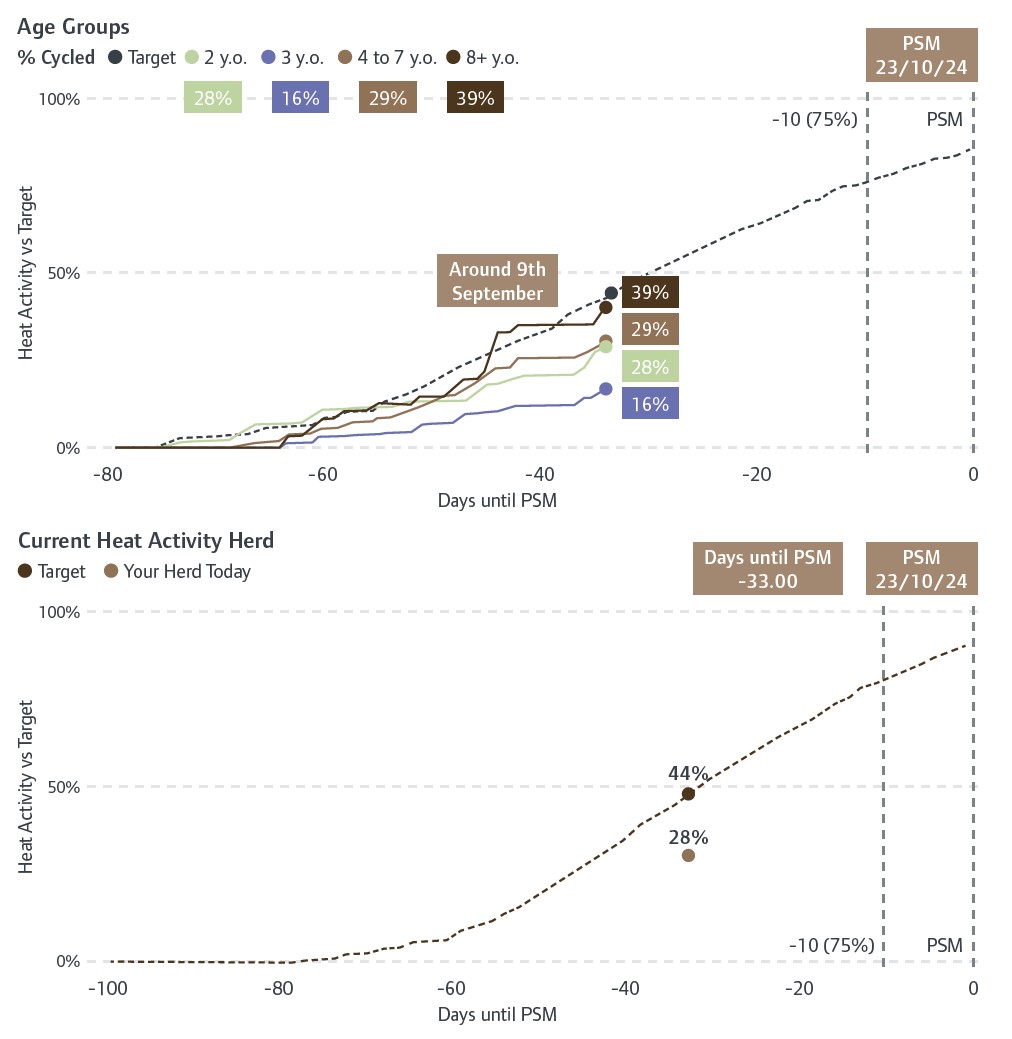In the world of dairy farming, ensuring the reproductive success of your herd is crucial for maximising productivity and profitability. One of the most critical periods in this process is the pre-mating phase, during which cows exhibit heat signs. Understanding these signs and leveraging new technologies, such as wearable collars, can significantly enhance your herd’s reproductive performance.
Importance of Pre-Mating Heats
- Improved Conception Rates: Research consistently shows that cows have higher conception rates when they have had at least one heat prior to mating. We can show this for individual farms too, using collar data to calculate the number of heats a cow has had prior to her first breeding. This makes it possible to calculate the exact conception rate for first matings within your own herd, year on year.
- Efficient Use of Resources: Available data can be used to make decisions around intervention strategies as well as track your herd’s progress year on year. This can aid in your return on investment.
- Enhanced Calving Intervals: The ideal calving interval in a seasonal, pastoral dairy herd is 12 months. Maintaining this interval ensures that a cow calves early, has enough time to recover, while also producing milk at optimum levels. A longer calving interval leads to later calvings, lower in-calf rates and fewer days in milk.

Factors Influencing Pre-Mating Heats
- Nutritional Status: Cows in good body condition are more likely to exhibit clear heat signs. Proper nutrition supports energy balance and hormone production, both of which are critical for regular oestrous cycles.
- Health Status: Cows suffering from infections, lameness, or other health issues may not show typical heat signs, making detection more challenging. Regular health checks and prompt treatment are crucial.
- Social Environment: The dynamics within the herd can impact a cow’s behaviour. Stressful environments or hierarchies can suppress heat expression, especially in larger herds.
The Role of Wearable Technologies
Cow wearables can be used to track the onset of oestrus, giving you valuable insight into the current nutritional and health status of your herd.
- Real-Time Data Collection: Cow collar data can be used to quantify the number of cycling cows in your herd and put this into context with your approaching planned start of mating.
- Focus where it matters: Breaking down the herd data makes it possible to detect if certain groups within your herd are struggling more than others, e.g. first calvers or older cows. By homing in on specific groups, you are able to decide if you want to implement certain changes for a select number of cows, aiming for a more successful reproductive outcome.
- Detect major changes: For absentee owners, it can be useful to track changes in the herd performance, including pre-mating heats. Changes such as these can detect disruptive events, with the potential for negative impact on cycling rates and milk production. In this example, a drop in pre-mating heats was detected on a herd-level, which corresponded with a similar drop in milk production levels on the same date.
- Data-Driven Decision Making: If your cows aren’t cycling as well as expected, this provides focus where it is needed. Are nutritional needs met with the current feeding regime? Is herd health an issue and could steps be taken to prevent low submission rates during mating? Which cows are most suitable for hormonal intervention and how many should you treat to achieve your goals?

Implementing Wearable Technologies
To successfully integrate wearable technologies into your dairy operation, consider the following steps:
- Train Your Team: Ensure that everyone involved in the herd’s management understands how to use the technology effectively. Training will maximize the benefits of data collection and interpretation.
- Regular Data Review: Schedule regular reviews of the data collected to identify trends and make informed decisions. This could involve collaborating with veterinarians or nutritionists to assess herd health.
- Combine with Traditional Practices: While wearable technologies offer many benefits, they should complement existing knowledge on normal oestrus behaviour. It is still important that staff understand heat behaviour, normal cycle length and where and when to ask questions. Combining both approaches can yield the best results.
Conclusion
Pre-mating heats play a vital role in the reproductive success of dairy cows. By understanding the factors influencing these cycles and leveraging wearable technologies like collars, farmers can significantly enhance their herd management practices.
Always consult with your veterinarian for tailored advice and strategies specific to your farm. Your herd’s health and productivity depend on informed decision-making and proactive management.

